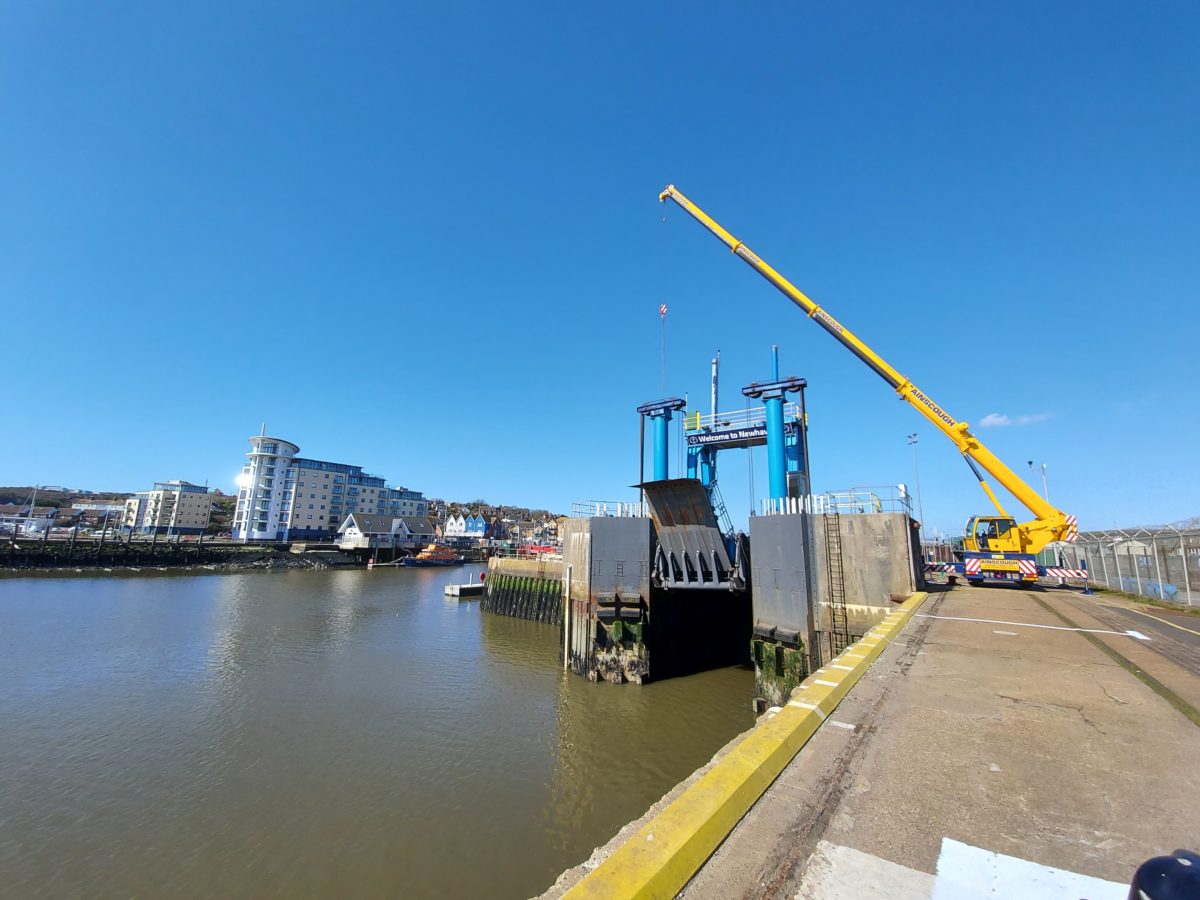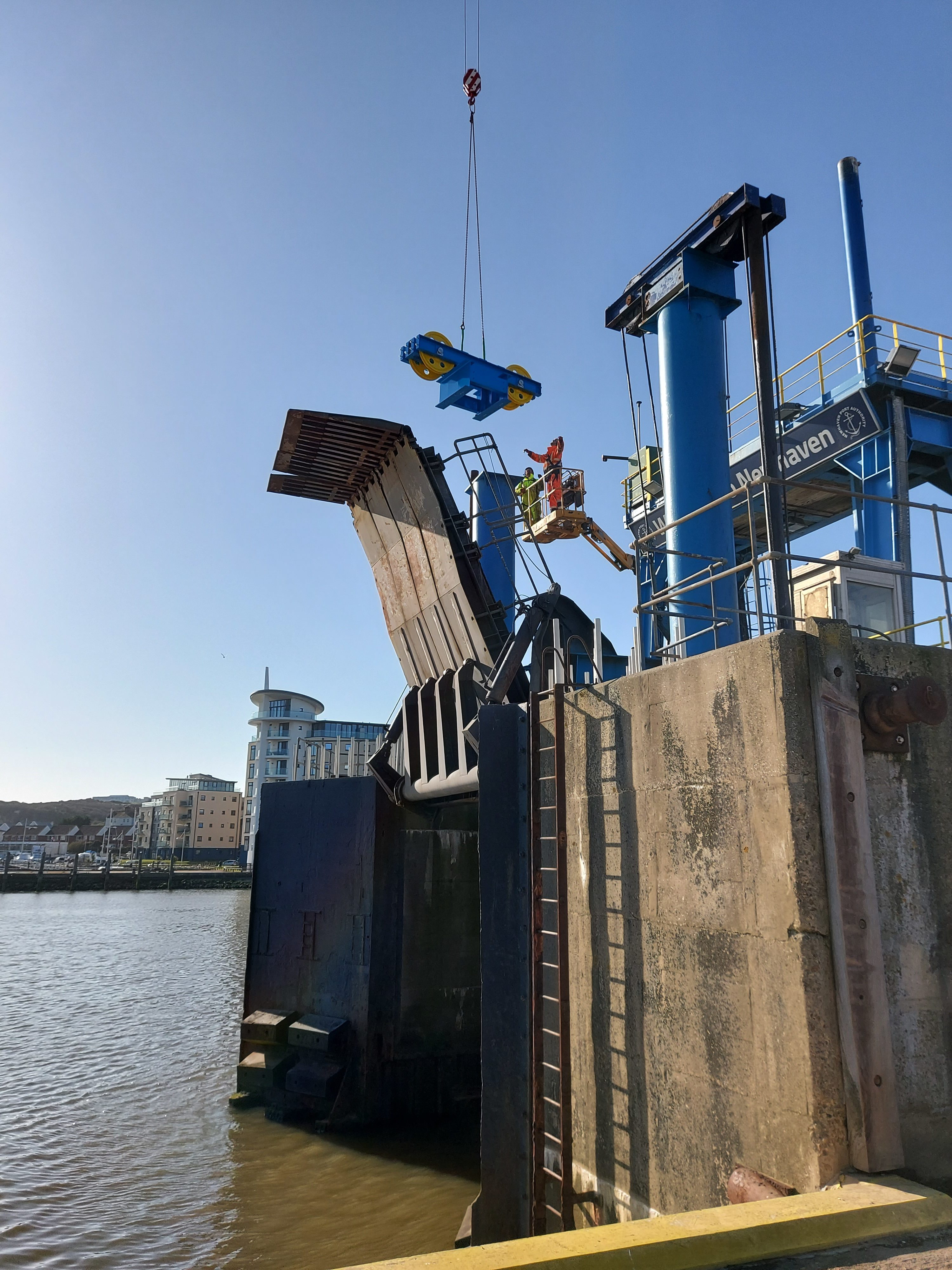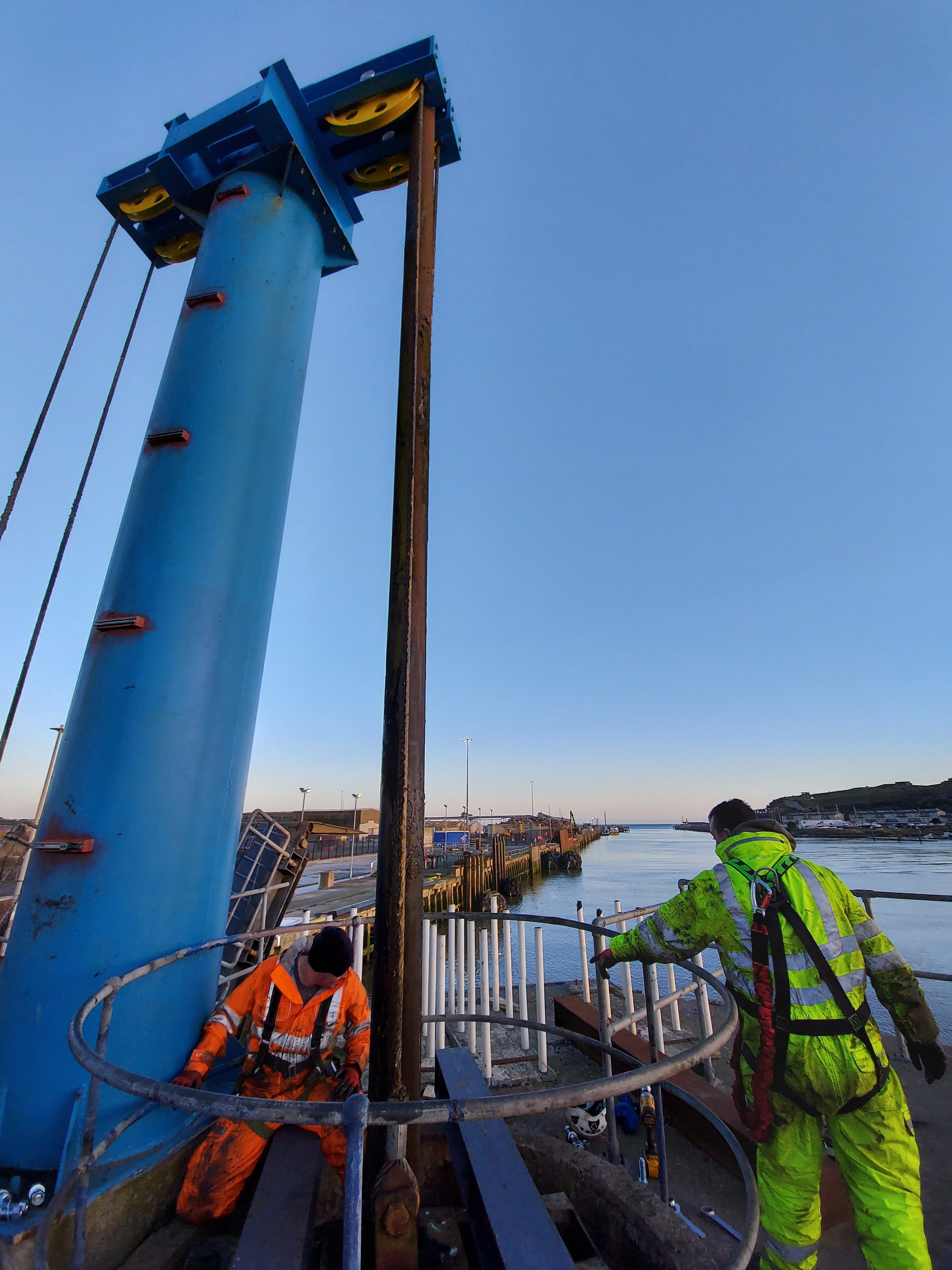In late 2019, Beckett Rankine undertook a survey of the cross channel ferry Ro-Ro Linkspan on Berth 1 at Newhaven Port.
The linkspan is mechanically hoisted by hydraulic rams but the deadload of the linkspan is supported by four cables connected to counterweights. Each cable passes over a pair of sheaves with four sheaves supported by each of a pair of columns. Our inspection found that the sheaves bearings were significantly worn due to misalignment of the cables. The sheaves, bearings and their pins all needed to be replaced; however, doing this without interrupting daily ferry sailings would require a great deal of pre-planning.
The decision was taken to replace the complete head stock to the columns which included the supporting framework for the sheaves. In this way the sheaves could be realigned to the cables significantly reducing ongoing wear. It would also simplify the on-site activities and the time it would take to complete them. The sheave realignment meant that repositioning the delta plates, associated connections and stiffening on the linkspan bridge was avoided. This saved significant time, cost and risk to the ferry schedule.
A detailed laser survey of the existing sheave assemblies and cables was commissioned in order to optimise the new positions of the sheaves. The linkspan was surveyed through its operating arc and related to the counterweight and support column positions. To do this the weather covers had to first be removed. With the detailed dimensions to hand we prepared detailed fabrication drawings for the replacement sheave assemblies with the improved geometry.
On behalf of our client, Newhaven Port and Properties, we appointed structural fabricators Ekspan Ltd to carry out the fabrication and installation work. We worked with Ekspan to develop a detailed methodology and programme for the works broken down into thirty-minute slots with hold and critical decision times identified. The temporary works were trialled and timed on site in advance and all bolt fixings replaced in advance to ensure that the work could be completed between ferry sailings. Once border security released the area, a ten-hour possession was available before the berth needed to be prepared for the next ferry.
Each set of sheaves were replaced on separate days and the works were completed several hours ahead of the backstop time frames. Repainting, installing greasing tubes and rain covers were added over the subsequent days. Fine weather assisted the work but the windows were carefully chosen to also ensure the wind risk to crane operations was minimised. The new sheaves are now aligned well within their design tolerances and should provide reliable low maintenance service for many years to come.




